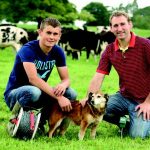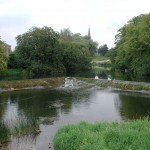What is Smart Farming? Smart Farming is a voluntary resource…
Book review – Wilding: the return of nature to a British farm
This is the rather wonderful story of what happens on a farm where the owners decided to do less, and ended up with much more than they imagined was possible.
Inheriting a fantastically large farm (by Irish standards anyway) in the late eighties, the nineties saw the author, Isabella Tree, and her husband Charlie Burrell farm their 3,500 acres in a largely conventional way – intensifying and maximising efficiency, with a focus on dairy. By the late nineties however, it was clear that their marginal land could no longer support this capital-intensive business and deliver a decent profit.
The story gets going in the early noughties, when the Knepp estate gives up on dairying after looking at the possibility of yet another million-pound investment to intensify further and gain efficiency by moving from three dairies to two. Selling all their cattle and dairying equipment, they start over from scratch. Looking at what they want to preserve, and how some experimental projects in Europe are going, gives them the initial seeds of ideas for what to do.

Knepp is slowly let go wild, but with the benefits of some continued support from CAP payments, and a somewhat structured approach. Their farm is divided into 3 large blocks, managed somewhat independently of each other. They looked at the whole ecosystem, and realised that larger animal species that would have lived there previously were missing. Old-breed grazing animals have been used to create habitat, restoring natural processes long lost from our landscapes. They focused on older breeds, like Longhorn Cattle and Exmoor Ponies. These species were relatively hardy, and they tried to intervene as little as possible, letting them roam free on the estate. Too many animals would turn the estate back to grassland; too few and it will become closed canopy forest. Getting the balance right allows them to maintain a rich and diverse wood pasture landscape. They also sell about 75 tonnes of free roaming, pasture fed meat each year, which allows them to manage numbers and provides a valuable source of income.
One of the most surprising things about what they did is that there were no plans, or targets for wild species – the land was let go wild, and some of the best results were completely unplanned. Within a decade, some very rare species made Knepp their home, and the range of what lives there now is truly astounding –including some rare purple emperor butterflies, peregrine falcons, nightingales, and orchids.
The book also tells us the fascinating history of farming, fields and most especially the soil in England – telling the story of how the landscape has developed over millennia. It challenges the conventional wisdom of dark closed canopy forests and open pasture being in competition with each other, and instead outlining the idea of a more mixed wood-pasture system, with trees and pasture being part of one resilient, diverse, and complex ecosystem.
This is an inspiring book and is worth reading. Its most valuable lesson may be simply that nature does not need us to plan, set targets, or do much – it just needs some space, and to be largely left alone to its own devices. As Jeff Goldblum once said in Jurassic Park, ‘life finds a way…’.







